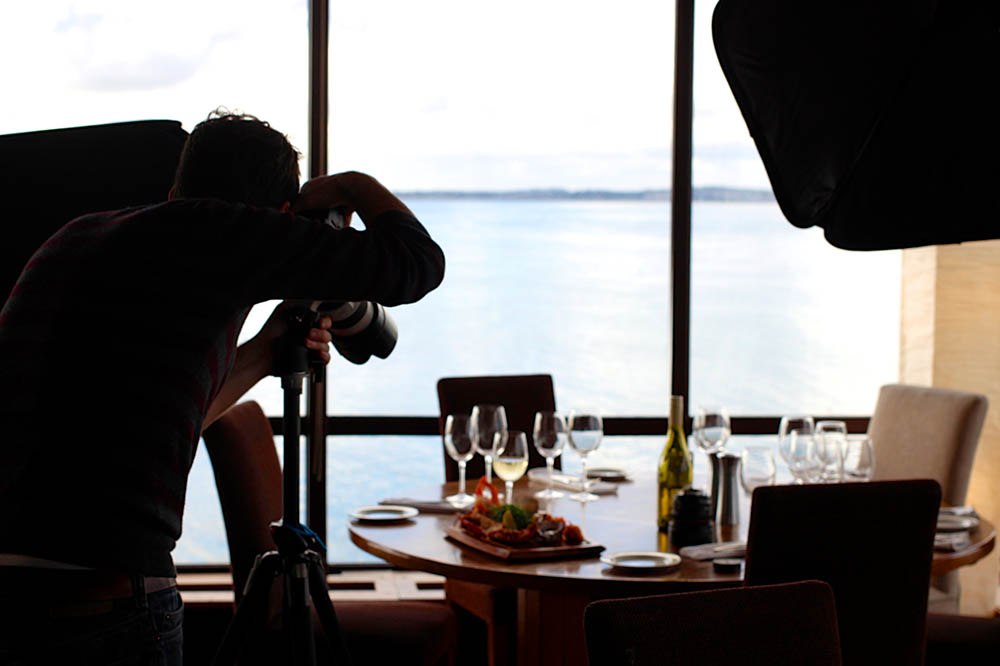Are you wondering what to charge for photography services? If so, you’re not alone. Learning how to price photography is challenging, and even professionals struggle to answer this question in a day when everyone considers themselves a photographer. This is a tough blog subject that I’ve thought of writing many times, but have always hesitated. That’s because there’s truly no easy way to answer the question, “what’s your photography rate?” But I’ll help you figure out where to start in your pricing journey by breaking down all of the factors and added costs that you should factor into your rate. I’ll also include a sample photography estimate below.
Why is Pricing Photography So Difficult?
First of all, let’s dig into why we find pricing to be so hard. It really comes down to psychological vulnerability. When you price your work, you’re putting a value on your time and quality of work. There’s always a fear that the client won’t value your work in the same way you do, and this makes pricing a challenge. One of the best ways to get over this fear of pricing is to put some thought into how you come up with your price.
Put yourself in your client’s shoes for a moment. Photographer A tells you their rate is $750 with no added details. Meanwhile, Photographer B quotes the same rate, but also includes details such as, “my rate is $150 per hour. For your project quoting 5 hours of work, that makes for a total of $750.” Which photographer would you choose? This scenario is important not just from the client-perspective, but for your own as well. If you know exactly how you came up with a price, you can state it with confidence.
The Main Components of a Photography Rate
When you think about it, a photography rate shouldn’t be an arbitrary number. Instead, it should be a thoughtfully calculated number that covers the costs and expenses of executing the photo shoot.
- Scope of Work – What does the client want or expect from the photo shoot?
- Creative Fee – How much time will it take you to deliver on those expectations?
- Expenses – How much money will it cost to execute the photo shoot?
- Delivery – When and how will the client receive images?
- Licensing – How will the client use the images?
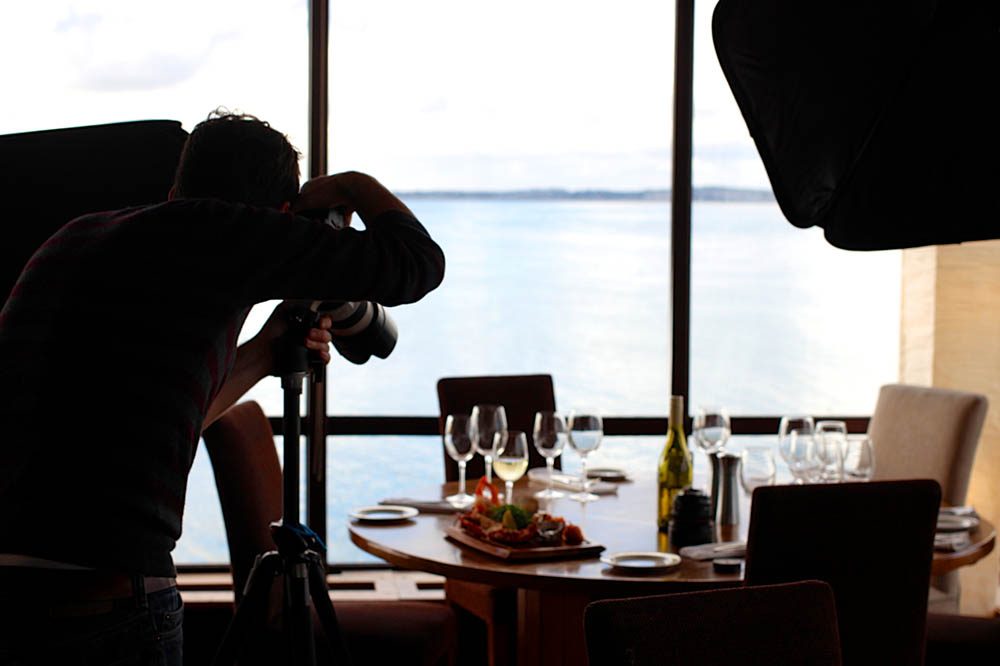
How to Figure Out What to Charge
Determining your photography rates is dependent on several factors.
1. Scope of Work – What are your client’s expectations?
Generally speaking, there are two types of photography clients: consumer and commercial. If you’re not sure of the differences between the two client types, check out this other post that explains the difference between commercial and consumer clients. How you charge one is entirely different than how you would charge another. Even within each client type, there are additional layers to consider (ie. nonprofit versus for-profit commercial client). So your first step is to determine what kind of client you’re speaking with.
Some questions you might ask a prospective client:
- What kind of photos are we looking to produce?
- Who or what are the photography subjects?
- Who is the intended audience for the resulting photos?
- Does the client have previous photos or a mood board depicting the ideal photo style they are trying to achieve?
2. Creative Fee – How much is your time worth?
After you get an idea of your client’s scope of work and expectations, use that information to come up with your creative fee. The creative fee applies to both consumer and commercial photography clients. This accounts for the time you will spend producing those images; depending on the type of photography, you may also factor in post-processing or editing time into your creative fee. But if you will do extensive post-processing on say product photography images, it’s worth charging a separate editing fee. In many cases, a creative fee is best calculated as an hourly rate so you will need to determine how much time you will spend producing images.
Your creative fee should correspond to your level of experience and quality of work that you produce. A more experienced professional will usually have a higher creative fee than an amateur.
Creative Fee – Questions to Ask
- How much time do we have with each photography subject?
- How much time do we have to set up?
- Will you need extra time to post-process or edit the photos?
- Do you have a shot list? What’s on the shot list, and how much time will it take to shoot each shot list item?

Startup Stock Photos
2. Expenses – What will you need to produce images?
Another big component of photography pricing is the production fee. This amount will vary depending on the type of photography that you do. For example, I rarely charge production fees for event photography since I already own all of the camera gear I need. But in the case of a food photography shoot, I’m more likely to charge production fees. Things that might get added to the production fees include a food stylist, rental of a kitchen, and extra equipment that I might have to borrow or rent, such as studio lights or backdrops.
Most of the time, the production fee should be billed to the client. But this means being very price conscious and providing your client with at least two production fee estimates that fit different budgets. This gives your client a choice in terms of how much they spend. Also be sure to only add items within reason to your production fees. For example, you would never charge your client a production fee of buying you a brand new lens, but you could charge the expense you would incur for renting the lens for the shoot.
Production Fees – Questions to Ask
- Where will we conduct the photo shoot? Do we have permission from the location owner?
- Do you have time to scout the location and do a walkthrough ahead of time?
- What camera equipment and accessories do we need to create those photos?
- Do you need extra help in the form of assistants, makeup, wardrobe, props, etc?
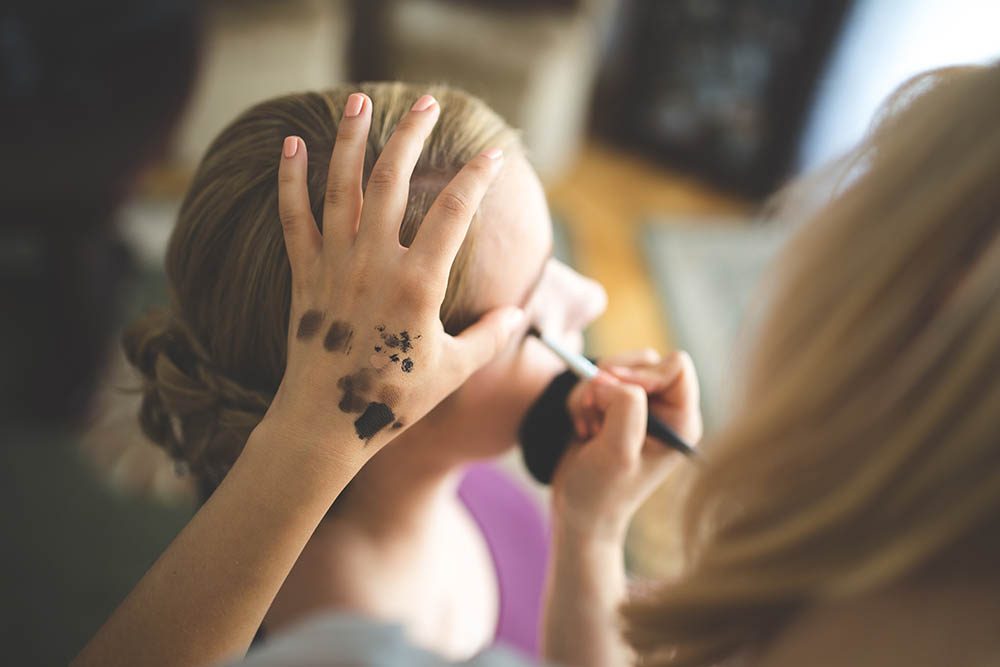
3. Delivery – When and how will the client receive photos?
Photo delivery might seem like a no-brainer, but it is very important to make sure your client expectations match yours. Every photographer’s exact perimeters will vary, but here is mine. Included in my photography rate is an electronic delivery of edited high-resolution JPG photos within 14 business days following the photo shoot. If the client requests anything outside of these conditions, they are charged extra.
Common Photo Delivery Add-On Fees
- a rush delivery (handing over images in 48 hours or less)
- needing to mail photos via snail mail
- handing over original RAW images
Delivery Fee – Questions to ask
- When is the deadline?
- How many photos is the client expecting?
- What is the final size and resolution of photos the client will need?
- How would the client like to receive the images?
4. Licensing – How will your client use the photos?
If you are working with a commercial client, a licensing (or usage) fees should also be a part of your photography rate equation. Generally speaking, licensing fees won’t apply to consumer photography clients (ie. wedding, family photos); if the client intends to use the photos for purely personal reasons, there is no reason to charge them for commercial usage. But it’s still a good idea to know the basics of photo licensing and perhaps write this into a consumer photography contract in case your client considers using your images commercially.
What is a photo licensing fee?
Every time a photographer creates an image, he or she owns the copyright to that image. A license is an agreement in which the photographer specifies exactly how the client may use the images. Why is this important? Without a license that specifies exact photo usage terms, the client can freely use your images however and whenever they wish.
Imagine you take a photo of a hamburger for McDonald’s. Without a photo license, McDonald’s is free to use that image however they please, say on a billboard, printed in a newspaper ad, or in a TV ad. Technically, you the photographer should be paid every single time McDonald’s uses your image since they are using it in a commercial manner that brings them more customers.
If licensing is still a hard concept to grasp, consider this: if a client does not hire a photographer to take unique images, their main alternative is to look for a stock photo. Head over to a stock photography website such as Getty Images and see what kind of licensing fees they charge for a hamburger photo. That gives you an idea of what you could be charging just for licensing an existing image!
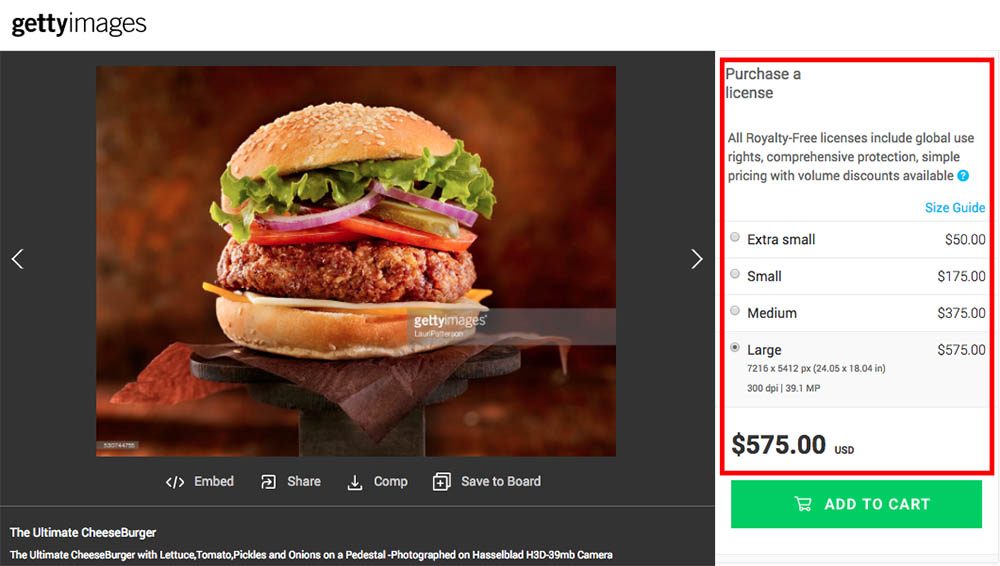
How to calculate a licensing fee
Traditionally, licensing fees are separate from the creative fee. Clients might pay a creative fee for your time to create an image, but they should still pay a licensing fee depending on how they plan to use your images. When it comes to setting a licensing fee, there is no right or wrong way to go about it, but you can ask some of the basic questions below to get an idea of what you should be charging. After you get the answers to these questions, plug them into a program called FotoQuote to check industry-standard photography rates.
Licensing (Usage) Fees – Applies only to Commercial Photography Clients
- How will the resulting photos be used by the client?
- How long will the photos be used in this manner?
- If the photos will be printed in a publication, what is the name of the publication?
- In what specific pages of the publication will the photo(s) be used? (ie. cover image costs more than a thumbnail)
- How many copies of the publication will be printed, and in what geographic areas will it be distributed?
- Does the client have a pre-determined licensing or usage budget?
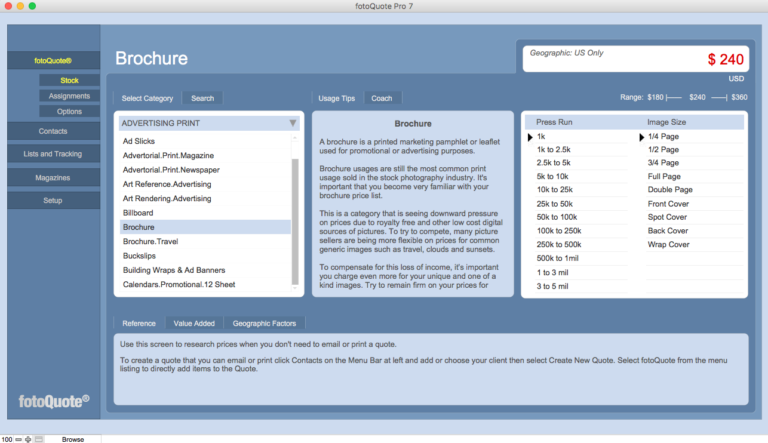
Photo licensing today
Although photo licensing is an important topic, I’m seeing it disappear from the photography industry. More clients ask for a photography rate that includes unlimited licensing, or some clients don’t even know what photo licensing is. As a photographer, it’s important that you know what photo licensing is and pass this cost and the knowledge of it on to your clients. You may even need to educate your client a bit — this is where the McDonald’s hamburger example above seems to come in the handiest.
5. So…what’s your rate?
As a photographer, you’ll get asked this question more times than you can remember. What’s the appropriate response, and when?
It depends on where your client is in the hiring stage. Many times, a client asks this question simply to get a sense of how much it would cost to work with you. The client may not even have a specific project in mind yet. If this is the case, try to ask follow-up questions to get the client to describe a typical photo shoot scenario. Based on this scenario, offer your projected price structure and be sure to include it as part of your photography contract.
However, if you’re in a casual networking situation and someone you just met is asking about your photography rates off the cuff, keep your response short and simple, with the opportunity to follow-up. You don’t know if they are asking out of politeness, or if they are truly interested in your services. Keep it a no-pressure situation that lets the client contact you if they choose.
Sample Responses for a Casual Encounter
Consumer client: “I charge $xxxx for a full day of wedding photography coverage; I also offer half-day wedding photography packages and more extensive all-day coverage with a second shooter. If you would like a more detailed price estimate, I’d be happy to set up a meeting with you to further discuss how we can work together. Here’s my business card; please call or email at any time.”
Commercial client: “I charge $xxx per hour for corporate event photography, plus a per-client-selected image licensing fee depending on how the resulting photos will be used. If you would like a more detailed price estimate, here’s my business card. Please call or email at any time to discuss details and negotiate a rate that will fit your budget.”
Sample Photography Rate Estimate
Below is a sample screenshot of what a photography estimate might look like. This estimate was put together in QuickBooks, an accounting program that I highly recommend using to run your photography business. Not only can you put together estimates, but you can also convert them into invoices and collect online payments from clients as needed.
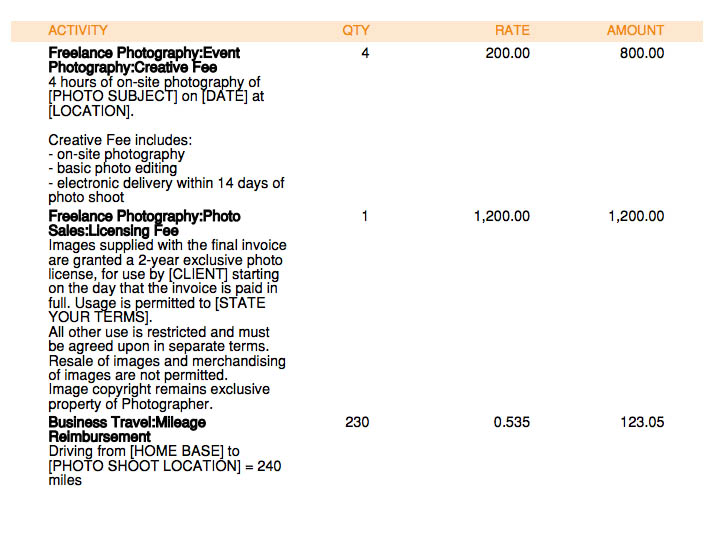
In Conclusion
By now it’s probably apparent that there is no one-size-fits-all answer to the question of photography rates and prices. But hopefully, this blog serves as a good launching point for considering all of the factors that make up a photography rate. What are your thoughts on photography pricing? Let me know in the comments below!
